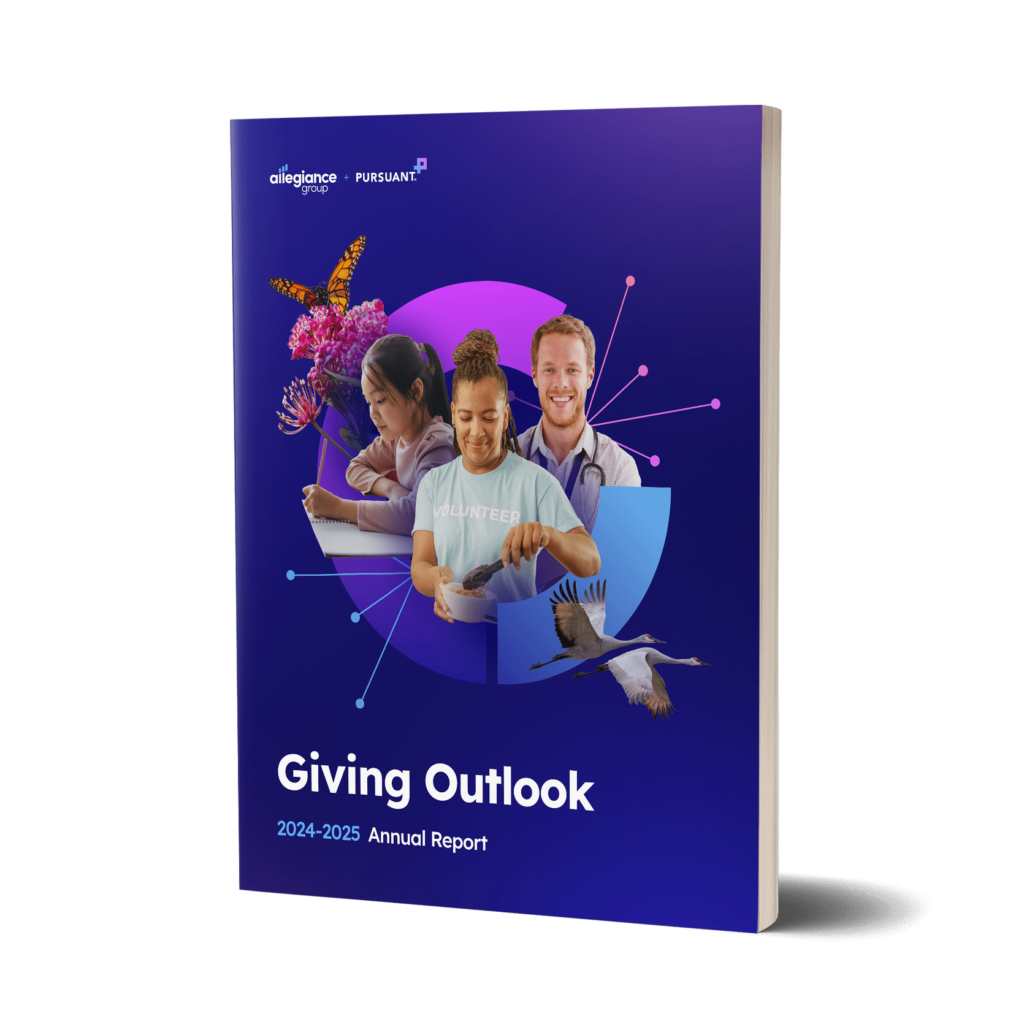6 Donor Behavior Trends to Guide Your 2024 Fundraising

We’re almost halfway through 2024, so let’s take a quick pulse check: How are your donors acting? Are you being ghosted, or is your engagement still good? What about giving—are your supporters wavering in their commitment?
Overall, fundraisers felt optimistic near the end of 2023. They were leaning into data-driven insights and proven strategies for success. However, in terms of donor behavior, there was great variability in giving amounts. Some donors gave less or not at all, while others continued to support their favorite causes, even giving more than they did during COVID-19.
Our latest Philanthropic Pulse Survey results, released in April, outline how nonprofits performed quarter-by-quarter in 2023. The survey was held in January 2024, and 397 respondents participated.
Half of all respondents met or exceeded their new donor targets in Q4, a peak for the year. What’s more, between Q2 and Q4, about 63% of survey participants said they observed changes in their donor behavior. When we asked respondents what changes they saw, we noticed six trends:
Let’s dig into each trend to see what nonprofits are saying about their donor behavior. We’ll also discuss what these behaviors mean for nonprofits and share some key takeaways you can use to position yourself for growth and sustainability this year.
1. Fewer Donors, Higher Average Gift
Many organizations noted a decrease in the number of donors. However, those who continue to donate are giving larger amounts on average.
Nonprofits say:
“Giving has increased since last quarter. Returning donors are giving more than they did in the past.”
“Harder to find donors and keep them, including monthly donors.”
“Although several of our donors have stepped up and increased their donation, we have lost many of our smaller, regular donors.”
“We have (fewer) donors, but those who are giving are giving at a higher amount, offsetting the loss of donors.”
2. Decrease in Donations
Overall, there’s a decline in donations. Some donors are reducing their giving frequency or stopping altogether due to financial constraints, shifting priorities, or economic uncertainty.
Nonprofits say:
“Some regular donors have stopped ongoing donations.”
“Less likelihood to renew or increase past donations.”
“We are not receiving as many individual donations as in previous years.”
“Fewer new donors; existing donors making fewer gifts; recurring donors reducing monthly contributions.”
3. Shift in Giving Patterns
Donors are changing how they give, with more donations coming from donor advised funds (DAFs), IRA distributions, or other non-traditional methods. Nonprofits are also seeing more targeted giving, with donors allocating funds toward specific projects or causes rather than making general donations.
Nonprofits say:
“Increase in small individual gift giving, long-term giving increases over time.”
“Getting a lot more donor advised funds, even at low levels like $25.”
“Less likely to give unrestricted gifts; more likely to respond to specific restricted campaigns.”
“Some donors have increased their amount and (are) now giving by IRA or another form like that for tax breaks.”
“Definite increase in giving via DAFs.”
4. Increased Caution and Engagement
Donors have become more cautious with their giving. They want more information about an organization’s financials, impact, and long-term plans. But donors also show a desire for deeper engagement and transparency. Tangible results of their donations are more important than ever.
Nonprofits say:
“(Donors) are more cautious and want even more information about measures of success for our programs.”
“Donors want to be more engaged and not just transactional.”
“Being more cautious on long-term commitments but very interested in supporting immediate needs.”
“They are requesting more information on the organization’s finances.”
5. Impact of External Factors
There are many external factors influencing donors’ decisions, such as inflation, economic conditions, the political climate, and global crises. This uncertainty is making some donors hesitant to commit, while others are reallocating their giving to more immediate needs like hunger and housing.
Nonprofits say:
“More people stating concerns about costs of living, groceries, needing to cut back on expenses, more people living off social services.”
“The political climate and the economy are factors.”
“Holding back funds because of election year.”
“Donor fatigue, also affected by crises in other countries such as Middle Eastern countries.”
6. Changes in Fundraising Strategies
Nonprofits are adapting their fundraising strategies to accommodate these shifts. For instance, they’re focusing on digital engagement, targeted appeals, and impact reporting. They’re also working to cultivate relationships with major donors.
Nonprofits say:
“Responding more to direct mail and email.”
“It is becoming increasingly difficult to get face-to-face time with donors.”
“Less interested in events that are in person; fewer personal interactions.”
“We’ve experienced a slight decrease in direct mail revenue but an increase in online giving overall.”

Looking for the latest trends? Check out our 2024-2025 Giving Outlook eBook.
Key Takeaways for Nonprofits
In general, nonprofits face plenty of challenges, such as donor fatigue and economic pressures. But there are also opportunities to engage donors more effectively and tailor fundraising efforts to meet evolving donor preferences.
For instance, consider how you manage relationships where new giving behaviors are at work – like donor advised funds. DAFs are one of the fastest-growing areas of charitable giving — $52 billion was granted to nonprofits in 2023. Also, use your donors’ desire for transparency to personalize your communications with them. Track their giving over the years and be clear about the impact their gifts have made in your outreach.
Most importantly, be empathetic to your donors’ concerns. Their economic uncertainty is real and valid. Check in with them regularly without asking for a donation. You never know who among your constituents might need your services.
Our team at Allegiance Group + Pursuant is here to support you as you navigate changing donor behaviors. Download your free copy of our Q4 2023 Philanthropic Pulse Survey and watch the webinar replay now. We can help you uncover opportunities in your donor base and develop fundraising strategies to align with changing preferences. Contact us today.